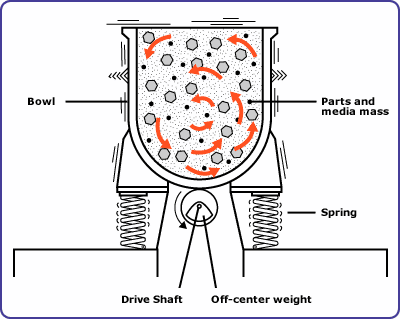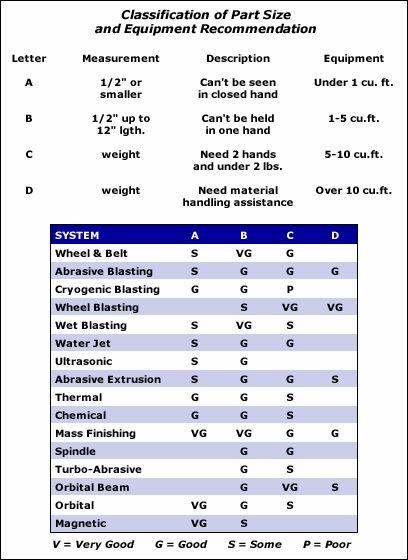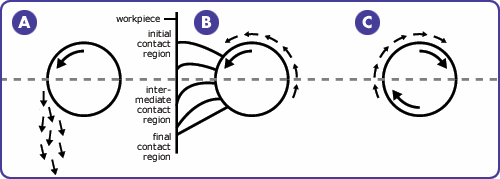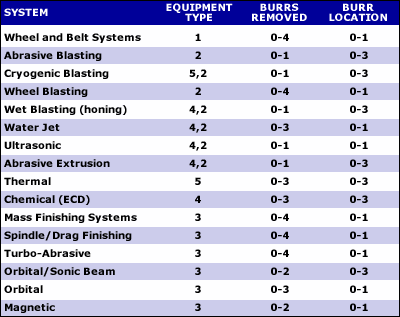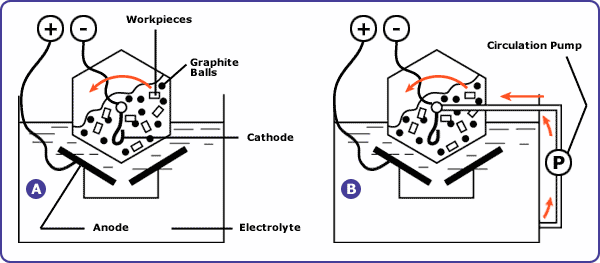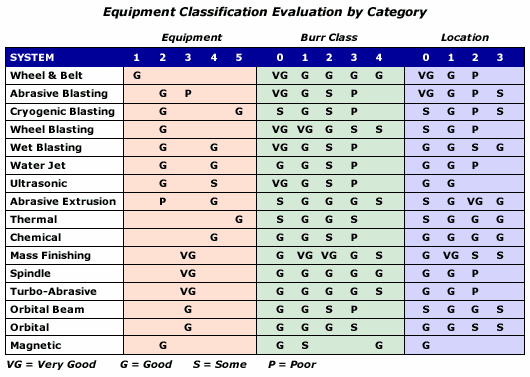Cleaning Systems
Mechanical finishing technology, whether used for finishing or preparation, is somewhat of an orphan industry that relies almost solely on the practices of each company using the technology. Some common processes are self-explanatory; however, there are some that warrant some form of standardization…
When one thinks of cleaning, soap and water come to mind first. All through childhood, you saw clothes and dishes washed using soap and water. It was normal. Water was the miracle elixir that dissolved everything, or was it? Not all waste or contaminants can be removed simply using water.
You learned that a bit of scrubbing (mechanical energy) along with the soap and water improved your chances of cleaning. Using an energy transfer device such as a cloth, brush or wire mesh was particularly helpful in removing the mud and grass stains you earned in that touch football game.
Featured Content
However, if you are talking about waste or contaminants within the pores of the material, there was little hope of material removal unless the material's surface was also slightly removed or modified. Liquid surface treatments can only do so much; whereas, mechanical transfer devices, equipment or systems deal primarily with the raw material surface profiles.
Most cleaning technologies use energy and molecules of different density, characteristics and behavior to effect the surface of yet another density. Both have an affect on the overall surface finish of both items although the desired result is to modify just one item. The result of all technologies using this principle is a cleaning process, it is often referred to as mechanical surface finishing when using solids.
Because of the media's mass and the way energy forces are used, a mechanical process normally removes more material more quickly and has a greater physical affect on the part dimensions than does liquid chemical processes, even with the use of electrical current. These systems are so aggressive that they are normally thought of as deburring or polishing systems rather than cleaning systems.
Today, industry cleaning problems and methods are more complex than ever. One must understand all the cleaning options and surface finishing first. Surface finish is the result of work processes and/or the final appearance of the part. Surface preparation is the final surface appearance of the part prior to the final coating.
Although there is a distinction between these two words, common use of these words and actual processing methods confuse them. No matter what the appearance, coatings are needed to protect the finish from oxidation. Surface preparation is the final appearance of a part prior to another process that seals the materials' surface. A surface preparation is a lot rougher finish than a surface finish.
To determine what type of surface finish is required, engineers must plan on what type of material treatment is needed for the product to work and hold up properly to a specific environment. Not only does the engineer have to specify the material, size and part dimensions, he must also specify fit, form and function. The engineer must realize that the machining dimensions of the part may vary from the finalized dimensions because of the surface treatment required to clean and protect the part.
As parts become smaller or where performance and reliability become more important, one must start to think more and more of surface preparation or modification, taking into account possible dimensional tolerances. There are three main options for parts finishing: 1) Surface preparation for heavy or thick protective coatings such as paint or plastic-based film products; 2) Surface preparation for thin film chemical coatings or treatments; and 3) Surface porosity modification for aesthetic appearances or polished finish.
Surface Finishing Options
Type I: Surface preparation for thick, protective coatings
- Surface finish will be the roughest of all options, and the finished part will exceed the part final dimensions because of the coating.
- Surface finish should be as rough as possible to increase the surface area for good adhesion properties and/or wear characteristics of the coating. RMS 35 or higher.
- Surface finish roughness profile should not exceed the height of the final film or coating thickness.
- Surface should be as clean as possible from debris, oils and oxidation. Therefore, cleaning should be done immediately before coating, but parts should be dry.
Type II: Surface preparation for thin film coatings
- Surface finish normally requires a secondary modification, and that will be the final dimensions of the part. It can be on the plus side of the tolerance depending on the film or coating.
- Surface finish requires a smoothing or modification of the part to improve uniformity of the surface profile of the finalized processed part. Normal RMS range is 12 to 20.
- Surface finish roughness profile is not as critical for most chemical treatments; however, the smoother the surface, the more uniform the treatment.
Type III: Polished finishes
- Surface finish will be the smoothest of all the options and close to the final dimensions of the part, but on the minus side of the tolerance. If a thin film coating is still required, dimensions may exceed final part size.
- Sometimes this process is not considered surface preparation, but a modification procedure or material removal process. The finalized part will either have a textured pattern or mirror finish in the RMS range of 2-18.
- Surface finish is mostly a question of porosity; however, coatings can still be applied for protective reasons.
All mechanical abrasive systems are material removal processes, even polishing or buffing systems. The only difference between them is the use of abrasive size, shape and characteristics of the particles and how the energy is applied to them. For heavy material removal, the general rule of thumb is the larger and harder the abrasive, the more material is removed in the shortest time. However, it also leaves the roughest surface finish. Naturally, the smaller the abrasive, the softer and smoother the surface finish.
Abrasive materials used for surface modifications are usually chosen based on hardness and/or economics; therefore, hands-on experience is the best judge for determining media use.
The harder the abrasive particle, the more material is removed. Also, most hard materials do more scratching than smoothing or polishing. As hard materials break down, their edges are rounded, and they become more mobile and better for polishing in a free mobile state. Therefore, for cleaning purposes one has to decide the surface preparation requirements before selecting a mechanical abrasive particle removal system.
Mineral hardness is an important factor in material removal rates and processing times. However, it is not the only factor. Size and friability are also important. The larger the abrasive particle size, the greater the amount of kinetic energy released. Besides the actual release of energy in the form of heat, there is also movement. Displacement and force are amplified in rapid movements of the remaining material, creating tremendous pressures against whatever they are in contact with.
The variable qualities of both materials and media make abrasive finishing systems sometimes appear unscientific, but there is a relationship. Most knowledge of abrasives, deburring and finishing are not taught, but are developed through experience.
The harder the mineral element, the greater the molecular bond. However, the bond or crystal structure does not relate to the kinetic energy forces. That usually means that as abrasive particles break down, they require greater outside energy or force to do the level of cleaning. That is both a true and false statement.
Because the particles become smaller, there is less bulk and weight per particle, but consequently more surface contact and friction. That reduces the amount of energy and size of the material removed. Where the difficulties lie is in the load characteristics of the material removal process.
Because of specific gravity, resistance, density and molecular structure, a part is normally larger than the abrasive media and, therefore, more resistant to change. The larger mass will always affect the smaller mass first. At first, larger, fewer and heavier irregularities are removed during surface cleaning, deburring or modification. Then as the part's surface becomes smoother, material removal size becomes smaller and smaller. That gives the appearance of little or no surface modification. Actually, the material removal rate remains fairly constant, but the physical perception is deceiving. If you go strictly by the weight of the material removed, this is a false statement.
All abrasive media will work up to a certain point and then slowly decrease in efficiency, based upon the weight, mass and kinetic energy. As long as there is a transfer mechanism in place to apply pressure to both the part and the abrasive, there will be material removal. However, because we are talking about normal working conditions and processing time, an efficiency point is reached way before the life of the media is used up. At some point, greater energy force or pressure and smaller media are required to perform finer or smoother surface modification.
When the performance of abrasive particles decreases rapidly, new or different abrasive particles or abrasive media should be added. More energy or pressure can only be applied to the media or abrasive up to the point where that energy can be transferred in relationship to the part.
With the exception of a flat, smooth surface, irregularities will always exist to some extent because of the porosity. However, the size and/or amount of the irregularity can be reduced and will continually decrease to a point where the size of the abrasive media will not work efficiently.
Weight and mass are the most important factors to remove large amounts of surface irregularities. However, a point is reached where weight and mass become a liability. At some point, which depends on the characteristics of the abrasive media used, the breakdown rate or friability of the media becomes a more important factor than weight and mass. Technically, you cannot get a smoother surface than the abrasive particle you are using because the particle will actually produce irregularities that correspond to the physical abrasive particle size in use.
The only way to get around this rule of size is if the abrasive material is allowed to float or give in relationship to the pressure applied to both the abrasive and the material being worked. However, because most abrasives are fixed or bonded to a rigid surface, there is little ability to float, unless you add air or water to the process. Then again, if abrasives are permitted to free float, this may not produce a uniform surface. Because of this, contact pressure is important in material removal rates and surface finishes where time is important. How energy is applied and transferred to the abrasive particles is also important to material removal processes.
To produce finer material or edge finishes requires smaller grit sizes, longer time cycles and more aggressive processing methods. The fastest way to get a smooth polished finish is to prepare or refine the edge or surface features with coarse or larger media first and then rework this same area with consecutively smaller grit sizes using multiple steps. This step procedure is a slow process, but it is also faster than using only one size of small abrasive media to accomplish the same finishing task. Again, time and efficiency must be considered.
The abrasive particles must change or break down when they dislodge burrs, debris or surface irregularities. By not breaking down, excess energy is not imparted into the media, which could cause a condition resembling orange peel. This also means that the material's surface may become more dense where impact occurs to create a condition that is called work hardening, which is a similar effect produced by heat treating materials. In abrasive processes, the particle can deform the material surface, creating either a visual or microscopic indentation that leaves the surface rougher than it started out. This common condition results with blast finishing systems.
There are five basic equipment systems that provide surface finishing or material removal, six if you count manual operations. Of the original five, three are mechanical systems that use abrasives and two use liquids and temperature to clean parts.
What equipment is used is largely determined by what equipment already exists in house. However, just as there are surface finishing options, so there are equipment options. Once the surface finish requirements are determined, the equipment and method to achieve that surface cleaning or preparation need to be selected. How equipment uses energy is critical to the element of time, quality and economics in any process. Until now, selection of a system normally depends on in-house equipment and/or ones self-taught knowledge of systems.
Following is a classification system developed for all deburring or material removal systems.
Equipment Classification
Type 0: This system is for manual working of parts only. Energy is directed downward in a back and forth or circular pattern with an abrasive medium. The greater the downward force, the greater the abrasion.
Type 1: This system is used on relatively flat materials where the energy forces are directed down and parallel to the material worked on via a wheel, disc or belt. The results of the action create a horizontal wiping action and the smoothing of surface features.
Type 2: This system is used primarily for surface preparation for heavy coatings. This uses the abrasive blast method where the energy force is transmitted to a solid particle that is directed perpendicular or downward at a slight angle to the work piece. The results of the action are a rough textured surface finish.
Type 3: This system is used in mass finishing type equipment. This uses abrasive particles or preform shapes in a random combination or mixed energy forces or patterns that occur in all direction relative to the part. The results are modified blended surfaces and uniformly worked parts.
Type 4: This system, electropolishing, is used in the plating industry. This is primarily an electrical current directed through a liquid medium. The results produced are both surface and subsurface molecular changes to parts.
Type 5: This system is air-based, high-temperature heat method. This is a selective material-removal system that works primarily on surface irregularities or burrs. The results of this process vaporize and melt thin surface protrusions.
Burr Classification
Class 0: Burrs or material irregularities do not exist, but surface modification is required.
Class 1: Burrs are sharp edges that can cut one's finger or cut wire or tubing over time and/or vibration.
Class 2: Burrs are thin irregularities that can be removed form part with one's fingernail. Material thickness is approximately 0 - 0.01 inch.
Class 3: Burrs or material irregularities require greater pressure to remove than by the unaided hand alone. Material thickness is approximately 0.01 - 0.02 inch.
Class 4: Burrs or material irregularities require a lot of pressure and force on the media and part. Material thickness is greater than 0.02 inch.
Burr Location
0 Location: For surface modification only.
1 Location: For easy to reach outside dimensions.
2 Location: For difficult to reach inside or internal dimensions.
3 Location: For all burrs, inside and out, and surface modifications.
Part size is also an important factor for determining equipment, processes, production rates and controlling accountability of parts. Almost every material removal system classified so far has an alternate smaller system. One size does not fit all. Finishing equipment is built to reflect different size parts and volume; therefore, machine selection is normally determined by a range or mix of part sizes. There are four sizes or ranges of parts in most processing systems that we can classify and relate to the equipment classification system.
Historically, cleaning and material removal systems have been slow to change. However, as labor costs have risen, so too have there been improvements in processing equipment and methods. So much has changed that we need a scorecard to understand and determine what is best for one's particular part or application. These are the basics. These are a start.
To learn more visit Nova Finishing Systems Inc..


